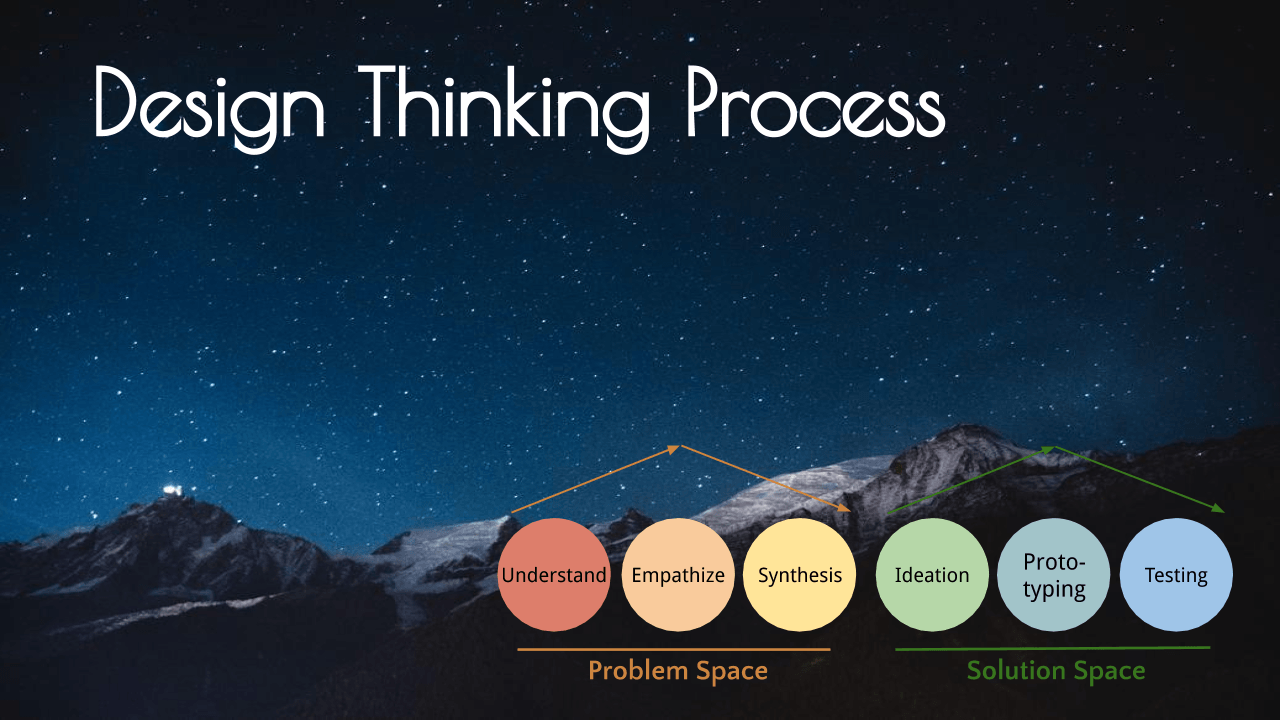Working with the Design Thinking Process enables structured creativity. The process consists of 6 phases that help teams to understand the problem they’re dealing with and then solve it in a creative way. Design Thinking is divided into two areas: problem-based and solution-based thinking.
The 6 Phases of Design Thinking Process:
- Understand: Only if the problem has really been recognized and understood, it can be sustainably resolved. That’s why the first step in design thinking is: discovering and understanding the connections … more
- Empathize: The rational analysis is not enough. It’s more about finding out and understanding the needs, fears, perceptions and emotions of the people around the problem. That is why empathy is crucial… more
- Synthesize: In the third phase, the most important findings from rational analysis and empathy work are gathered and melted together – synthesized… more
- Ideation: new, brave, wild, boring ideas – the main thing is to produce many, as they can always be sorted out. But room for courage and originality is only possible in the well-oiled design thinking process… more
- Prototyping: the heart of the creative process. Ideas are turned into tangible products that visualize the potential solutions… more
- Testing: A difficult but decisive step. Does the idea work? How should the product to be improved? What do people want? … more
The collected feedback can turn an idea into a sustainable solution. After testing, the reflection and the implementation of the solution may begin.
Process – Mindset – Methods
Design Thinking is more than just a process or a method. One important part of this creative problem-solving is the right Design Thinking Mindset. It must be continuously practiced and preserved for a successful innovation culture. This is why there are also 10 Design Thinking commandments.
The Core: See every problem as an opportunity that you can shape.
This includes the courage to make mistakes and allow completely unconventional thoughts. You can adapt every idea to reality, but it is much more difficult to develop courageous visions in everyday life and to think „out-of-the-box“.
Every step of the design thinking process involves certain methods. These methods bring the six phases of Design Thinking to life, but they do not make a creative process on their own.
